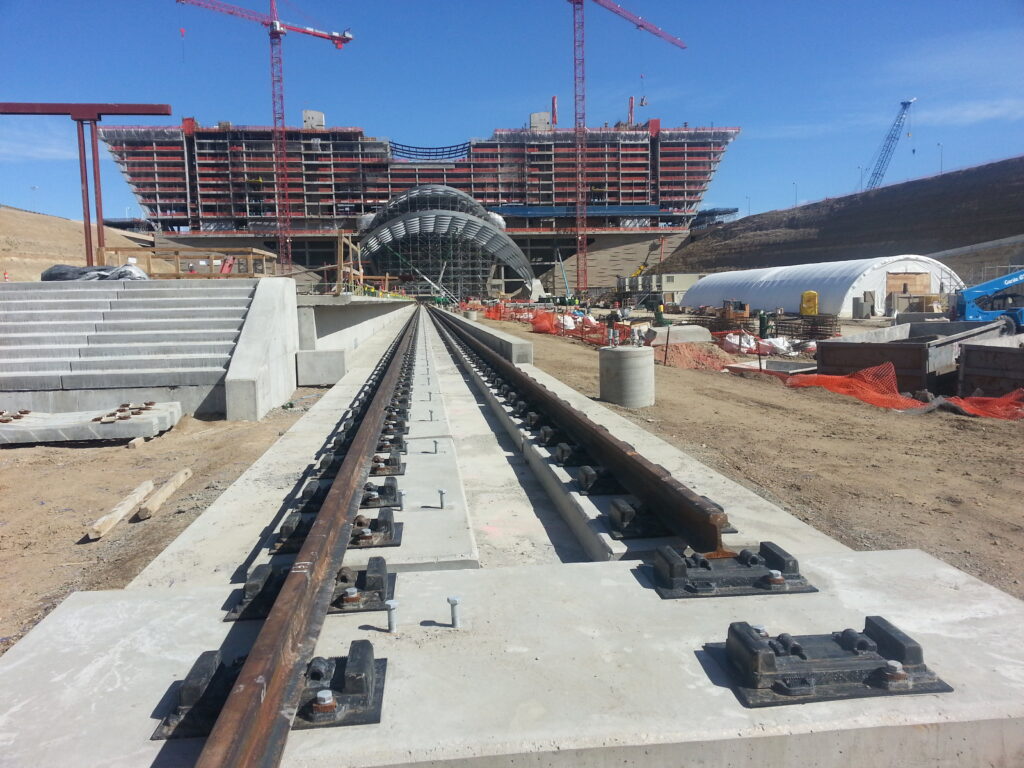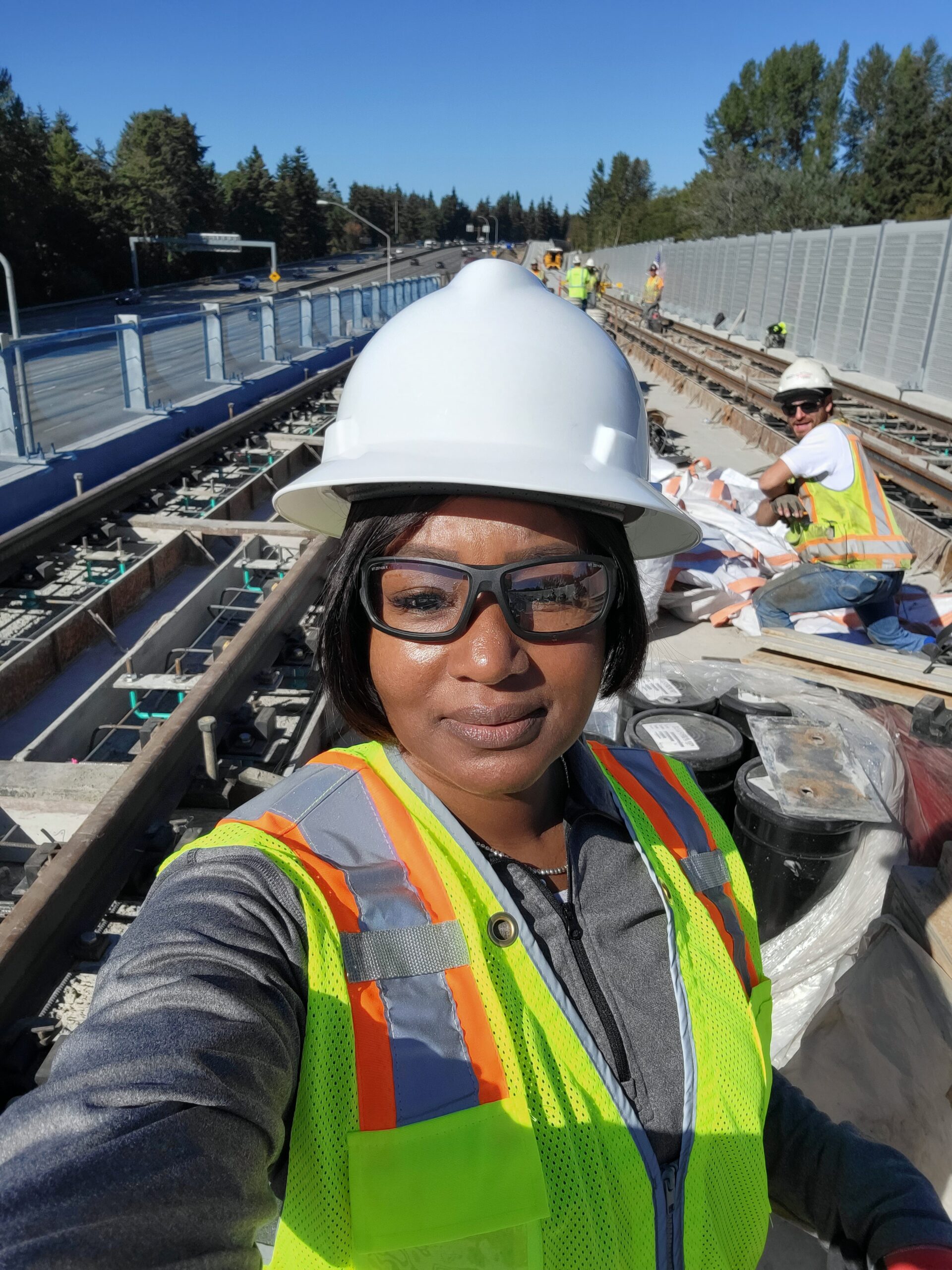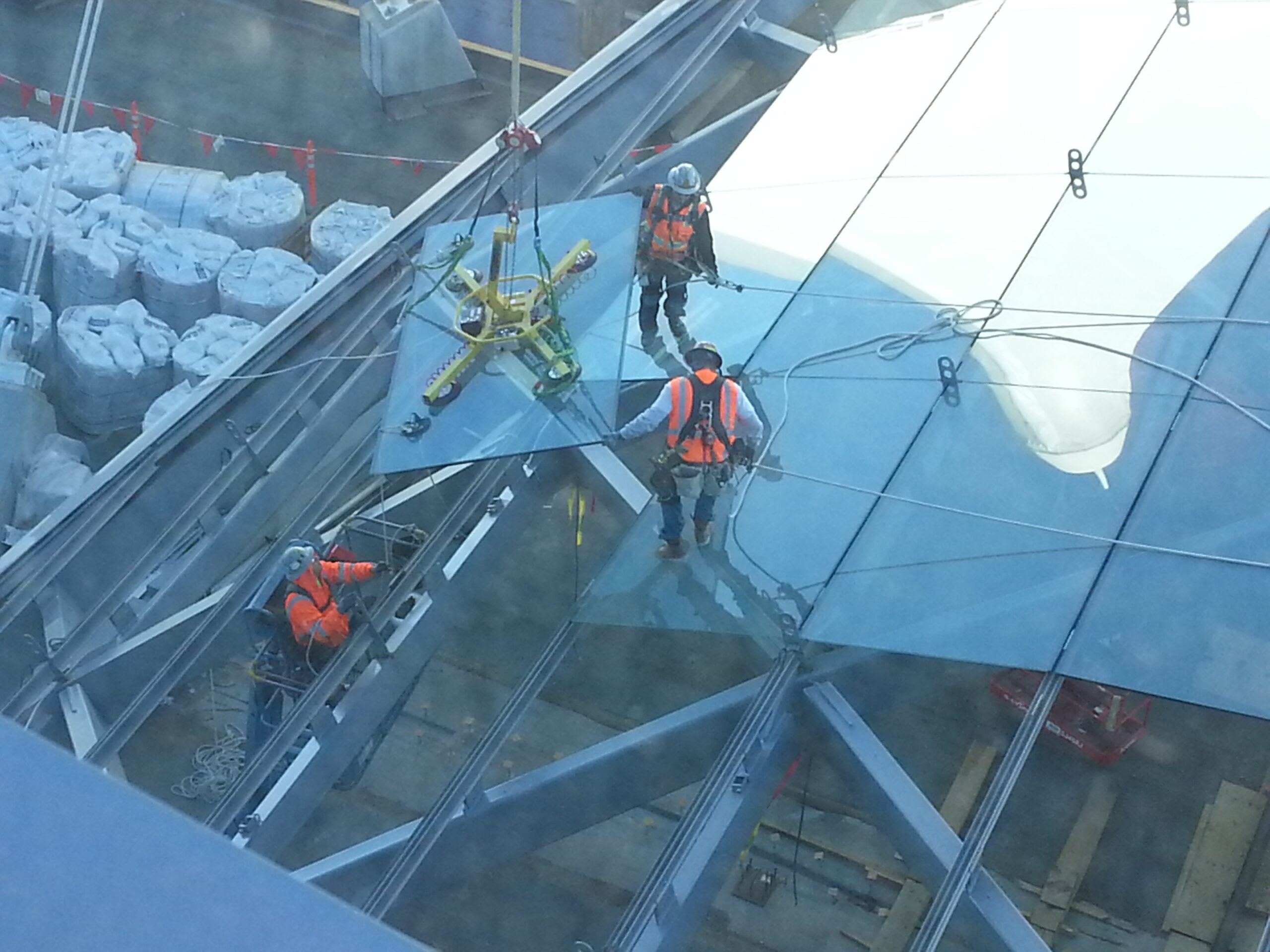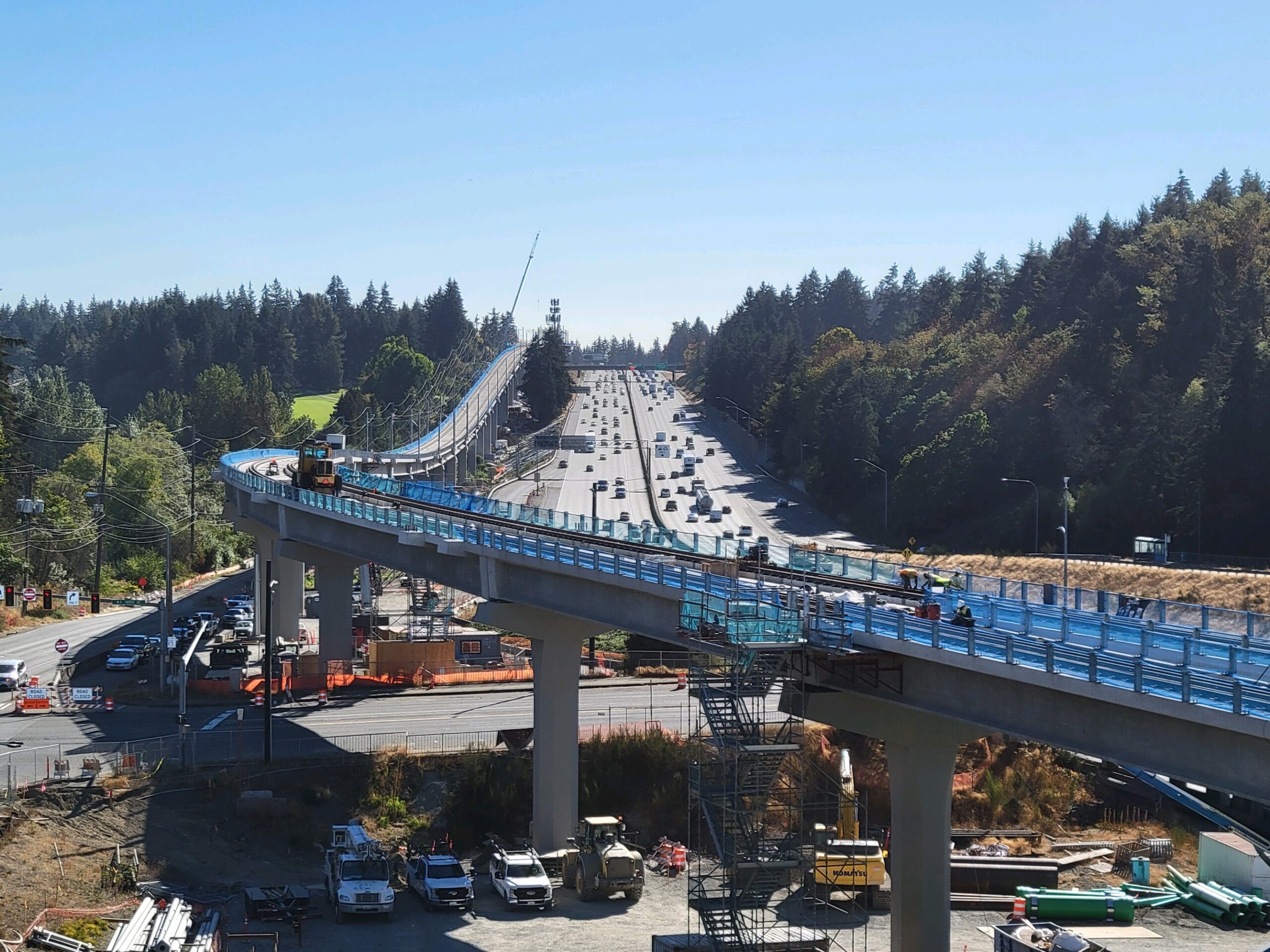
Ask your students this question and have everyone answer and then tell them that every town’s roads, bus systems, and train systems are designed by civil engineers like Tysheina Robertson. Then read Robertson’s profile together.
How do you get to school each day?
Every day, often without thinking about it, we walk, drive, or ride trains or buses over roads and bridges. We also send water we use to wash our clothes, bodies, and dishes into pipes that take it to the sewer and beyond. When we do those things, we don’t tend to notice the systems of roads, tracks, and water transportation and purification that make these activities possible … until slow traffic, leaky pipes, or problems caused by crazy weather remind us how great it is when these systems work well.
Standing behind these systems, making sure they work well, are civil engineers like Tysheina Robertson. She helps design, build, and maintain various transportation systems — whether they’re for pedestrians, vehicles, or water. In other words, Robertson helps people and the things we need move from place to place.
It takes a lot of math to design and maintain those systems! After getting an engineering degree, a civil engineer draws on “all of the fundamentals that you use in school,” including higher math, such as differential equations, calculus, and statistics.
At work, “we use geometry a lot: the angles and the curves that we use for our highways and our bridges.” Choosing the right one to “incorporate into your design increases the strength in your structure. There are a lot of triangles in bridges. A triangle is stronger than a square, because the forces that are applied to a triangle” cannot crush it as easily.
Robertson used geometry skills to make sure that the drainage systems in Denver, Colorado’s new commuter railroad work well. “When it rains, where does the rain go? …. The water has to drain at a particular slope.” It’s important to take advantage of gravity. “When a sewer system is designed, the cheapest way to design it is to make sure that your flow always goes downward.”

Referring to the Denver project, Robertson told Math4Science that “You have to track how much money is spent where, so everyone gets a good return from their investment. My project is valued at about 2.5 billion dollars. The public came up with one billion from the federal government and my company invested another billion. The transit system invested about half a billion dollars of their own money.”
More recently, Robertson has worked on a project that will bring water from Northern California to hot, dry southern California. When calculating how quickly water will flow through tunnels, engineers use certain equations which involve the friction factor for the type of pipe involved in the project. Concrete pipes slow water down more than PVC pipes do. So the friction factor for concrete is different from that for PVC.
Robertson and her team check to make sure the designers and engineers on their project use the right friction factors for the materials they’re using to move water. If they were to build a concrete water pipe, expecting the rate of water flow for a PVC pipe, they would have to add pumps to the system to speed up the water. The flow rate for PVC is often higher than the flow rate for concrete.
Correcting design and calculation errors before projects are finished being built can save the companies and local governments paying for the projects a lot of money. Dealing with money, from raising and investing it to spending it on materials and labor, also involves doing math… and checking it carefully.

Now, as a quality manager, Robertson can often be found checking other people’s math. She does this to support the infrastructure projects she helps manage.
Quality teams are independent of the professionals responsible for designing, building, and testing the different infrastructure systems. It is their job to ensure that checks are performed for the workers’ and general public’s safety.
Sometimes, Robertson and her colleagues find that certain design and construction codes (rules) were not followed by designers. Quality teams ensure that errors and omissions are documented and reported to project decision makers. Without their help, a company might have to redesign or rebuild, which could lead to expensive investigations or even cause loss of life.
Engineers must balance finances with architectural aesthetics. When a bridge is beautiful to look at, it often has a more complex design and costs more money to build. New York’s old Tappan Zee Bridge “ha[d] a relatively simple design, which generally costs less money.” Robertson compares more complicated bridges to a “luxury car fully loaded: you pay more.”
Engineers also focus on building lasting structures. Whether creating tunnels to move water where it’s needed or building a train system, the goal is usually to make sure the new system will last for at least 100 years.
Another priority that goes into civil engineers’ calculations: the environment. They research the areas where they are building, assessing the impact the project will have on plants, animals, and the people living nearby.

Sometimes the impact is positive. For instance, creating a train system to take people in and around Denver to work “reduce[d] pollution and made it easier for people to get to the airport without having to drive.” In the New York City area, where Robertson grew up in Harlem, commuter trains bring hundreds of thousands of people to school and to work every day. But until recently, there were no commuter trains in Denver.
Robertson’s father first inspired her to go into engineering. “He is a self-employed home improvement contractor and I wanted to be a construction worker.”
She also found the books she read inspiring. “When I was younger, I used to read a lot of Nancy Drew. She had to put pieces of a puzzle together to solve a crime. The same goes for engineering: it all starts with a need. For example, whoever designed the Snuggie: we’ve all had that same idea. You’re reading, you put the blanket up, but your arms have to come out. What are you going to do with your arms? It all starts with a problem.” Though the mystery novels about the teen-detective Nancy Drew don’t say “that she used the scientific method, that’s pretty much what she used. I learned that in the third grade and I still use it today.”
In middle school, Tysheina’s dreams of construction work shifted towards engineering: “One day we were going around the class” at Adam Clayton Powell Junior High School “and my teacher was asking everyone what they wanted to be. I was 13 years old and I told him I wanted to be a construction worker.” Tysheina’s teacher told her “to think about being a civil engineer.”
Thanks to her father’s inspiration and her teacher’s encouragement, Tysheina took the exam for New York City’s specialized high schools and made it into one of the city’s most prestigious programs. At Brooklyn Technical High School, “they have different majors you select in your junior year. I selected civil engineering, liked it, and decided to pursue it in college.” After graduating from Brooklyn Tech, she headed to Morgan State University in Baltimore.
“Back then and even now, the part I liked best” about engineering “was that I wasn’t sitting in an office all day. I was a tomboy so not wearing dresses and all that stuff was appealing to me.” So was “the challenge, the thinking aspect of it (I’m a chess player): the problem-solving was something I liked.”
Robertson also likes the variety and community she finds in her work. “I like the fact that when the project is over, I start a new project. Each project is different.” “It’s a team environment.” “You get people that you work with from all over the world and all over the country.”
Next time you drive, bike, walk, or take a train or bus across a bridge, think about the civil engineers whose work went into making sure its design would keep you safe, dry, and perhaps also inspired by its beauty.



